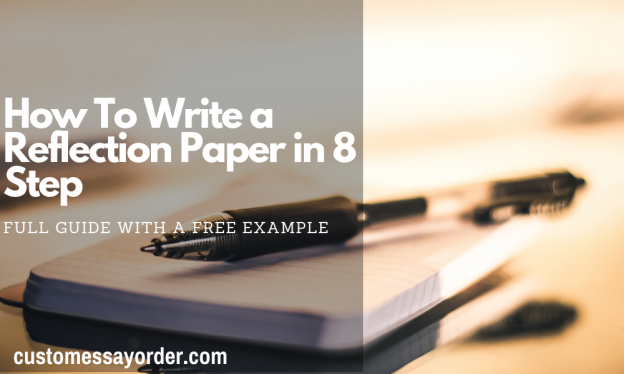Academic writing is complete with citing sources of the data. The practice enhances the credibility of papers and essays and ensures that authors get their due credit. It would have been easier for students to master a single formatting style but there are a few in different areas of specialization. APA (American Psychological Association) is widely used in social sciences, MLA (Modern Language Association) has found a permanent home in humanities, ASA (American Sociological Association) is followed for Sociology and Anthropology, and Chicago/Turabian reigns supreme for history. As for IEEE (Institute of Electrical and Electronics Engineers), it is popular among technical and engineering fields, as the name indicates.
Each style has its own set of rules and limitations. Students will be better off learning about these because they might have to use one in school and another one in college. In this blog, we will cover the bases of all of these five citation styles. Let’s get started!
The Rationale Behind Citations
The citation gives credit to the original author of the information. In a way, it helps the new writer to avoid plagiarism in the paper. However, there are other reasons, far more profound, than merely getting the plagiarism-meter green in your essay.
Talking about plagiarism-free, high-quality research papers, we offer cheap custom essay writing services. You provide exactly what you need and our writers work from the ground up to match your expectations.
Intellectual Honesty
Giving credit to the original author fosters intellectual honesty in writers. It gives them real credit for their contribution to developing theses, ideas, and theories. This also gives a clear pathway for the development, refinement, and resurrection of thoughts in intellectual circles.
Building Credibility
Research papers without proper citations and credits to the established author are not much in terms of scholarly value. When you give credit to renowned authors, you show the readers that your ideas are backed by or based on theories on heavyweights of the field.
Scholarly Conversation
The whole point of writing papers is to connect with other scholars and get a conversation going. The more credibility your paper holds, the more effective it will be in getting the debate started and then sustaining it. That’s why it is important to have clear citations and references to original works.
Basic Citation Elements
Although there are different citation styles, as we have covered in the opening section, they all play with common elements differently to help readers identify the origins of the source material.
Here are some of the basic citation elements that are used in every formatting style:
- Author(s) name
- Title of the work
- Publication date
- Publisher or source information
- URL or DOI
Using these elements, scholars have developed elaborate schemes to create a complete system. In the coming sections, we will show you how you convey this information for the source with different styles.
Appropriate Level of Citation
Before we show you how you can cite a research paper in any one of the formatting styles, it is important to understand its appropriate levels. Balance is the key when it comes to citing a source in your work. Both students and seasoned academics normally face three types of issues in their papers while citing sources: under-citation, recitation, and unethical citations.
- Undercitation means that the writer has failed to give credit to all the sources used in the research paper.
- Undercitation can lead to accidental plagiarism while undermining the intellectual depth of your work. It also puts a question mark on the originality of your work.
- The best way to avoid under citation is to quote anything and everything that is not your idea or not considered common knowledge in the academic field.
Overcitation
- As the name indicates, this is the opposite of undercitation, where a writer gives too many citations to sources for even common knowledge of the field.
- The obvious problem with overcitation is that it can clutter your paper with quotes and insights from other scholars. In addition to this, it can overwhelm the readers and might show them a lack of knowledge and understanding on your end.
- Always err to the underside, especially when you are talking about general things in the academic field. A well-oiled strategy makes all the difference!
Unethical Citations
- Unethical citations are re-using work from previous papers without proper acknowledgment, citing sources you didn’t use, or even manipulating sources to inflate the value of your work.
- Unethical citations can lead to severe consequences for writers and scholars, both in the short and long term. These include retractions and future suspicions resulting in lost credibility in the academic fraternity.
- Always cite your sources truthfully and include references that have contributed to your research. Be transparent and forthright in your work.
Get Help with Your Paper!
Custom Essay Order stands out from the rest of its competitors for all the things that set apart papers and essays. It does not matter your budget, academic level, and area of expertise, we have a team of writers and editors who offer research paper writing services to perfection. Everything is custom and according to your requirements to ensure solid grades. On top of that, we offer a money-back guarantee and unlimited revisions on your order up to 30 days from the delivery. So, what are you waiting for? Pay for research writing through our secure link and get a complete, submission-ready research paper before the deadline!
How to Cite Sources in A Research Paper?
Formatting a research paper correctly is necessary to make your work presentable in a professional setting. Although there are different styles and rules in different citation reigns, here are some general guidelines that are applied across the board:
- Title Page
- Margins and Spacing
- Font Size and Style
- Headers, Footers, and Page Number
- Headings and Subheadings
- Citations
How to Write A Research Paper in APA Format?
- Title Page: Includes paper title, your name, and name of the affiliated institution, centered and double-spaced.
- Abstract: 150-250 word summary of the work including key findings on a separate page.
- Main Body: Covers introduction, method, results, and discussion at length.
- In-Text Citations: Include the last name of the author and the year of publication, such as Smith, 2024.
- References: At the end of the paper, alphabetized, and following the format: Author’s Last Name, First Initial. (Year). Title of the work. Publisher.
How to Write A Research Paper in MLA Format?
- Title and Header: Your name, instructor’s name, course, and date, are all left-aligned. The title of the paper should be centered.
- Main Body: Should include an introduction, body paragraphs, and conclusion of the paper.
- In-Text Citations: Uses the author-page style for this, such as Smith 55.
- Works Cited: List all the sources at the end of the paper. Follow the format: Author’s Last Name, First Name. Title of the Work. Publisher, Year of Publication.
How to Write A Research Paper in Chicago Format?
- Title Page: Your name, paper’s title, course details, and the date at the center of the page.
- Main Body: Includes the introduction, main body, and conclusion of the paper.
- Citations: Use footnotes and endnotes to cite sources. For in-text citations, use the author-date pattern.
- Bibliography/Reference List: Add a list in the bibliography to cover all the sources. Follow the pattern “author-date” to furnish a reference list.
How to Cite A Research Paper in ASA Format?
- Title Page: Name of the author, title of the paper, and the name of the institutions centered on the title page. A shortened version of the paper should follow every page.
- Abstract: A summary of 150-250 words of the key findings and insights of the paper.
- Main Body: Shed ample light on the opening, literature review, methodology, results, and discussion.
- In-Text Citations: Follow the pattern “author-date” for the in-text citations.
- References: Covers all the sources in the list and follows this format: Author’s Last Name, First Name. Year of Publication. Title of the Work. Publisher.
How to Cite A Research Paper in IEEE Format?
- Title Page: Name of the author, the title of the paper, and the name of the affiliated institution.
- Abstract: Summary of the research in no more than 250 words followed by keywords.
- Main Body: Takes care of the introduction, methods, results, discussion, and conclusion.
- In-Text Citations: Numbered references in square brackets compliant with references in the text.
- References: Follows the order as they appear in the text. The format is: Author’s initials and last name, “Title of the work,” Journal/Conference name, vol., no., pp., year.
Citation Styles Summary
Understanding the rules and mastering them to apply in your paper is the key. Still, if it is all too overwhelming for you, you can buy research papers online from us. We offer competitive pricing and deliver a submission-ready paper. Check out our dedicated page for getting research papers on any topic!
Now, let us recap the citation styles before closing this blog:
- APA: Used primarily in social sciences; employs author-date style for in-text citations; detailed reference list.
- MLA: Used in humanities; author-page in-text citations style; works cited list at the end.
- Chicago/Turabian: Popular in History and Arts subjects; covers notes and bibliography or author-date system for citations.
- ASA: Common in Sociology; author-date format with a focus on Sociological research
- IEEE: Popular in engineering and technical fields; uses numbered citations with a corresponding list of references.
Key Insights
It would not be an overstatement to say that citations are the gems of a research paper as it enhances the beauty and credibility of writing. When writing a research paper, it is important to try to strike a balance between under and over-citation. In addition to this, students should know for sure which style is preferred by their schools or instructors to avoid issues down the road. We have covered all the bases for you in the blog so use it as the ultimate guide while writing your next research paper.
FAQs
Do I have to cite sources in my research paper?
Citing sources is a must so yes, you have to do it while writing your research paper. Here are the reasons why:
- Gives credit to the original authors
- Allows readers to verify the given information
- Helps you avoid plagiarism
What are the differences between in-text citations and reference list entries?
In-text citations briefly indicate the source in the body of the text, hence the name. This includes the author’s name and/or the book’s name, year, or page. Reference entries provide the full picture on top of the information covered in the in-text citations, such as the publisher’s name, date, and complete title of the work.
How do I choose the best reference style for my research paper?
There are two ways to know which reference style will be best for your research paper:
- If it is explicitly stated by your instructor, you need to use that style.
- If not, you can go through the relevant section on this blog to know which citation format suits your paper depending on the academic field.
What are some common mistakes to avoid citing a research paper?
Here are some of the common mistakes that you should avoid while citing a research paper:
- Undercitation, over-citation, and unethical citation (details in the blog)
- Not following one style completely
- Making blatant mistakes across the board








